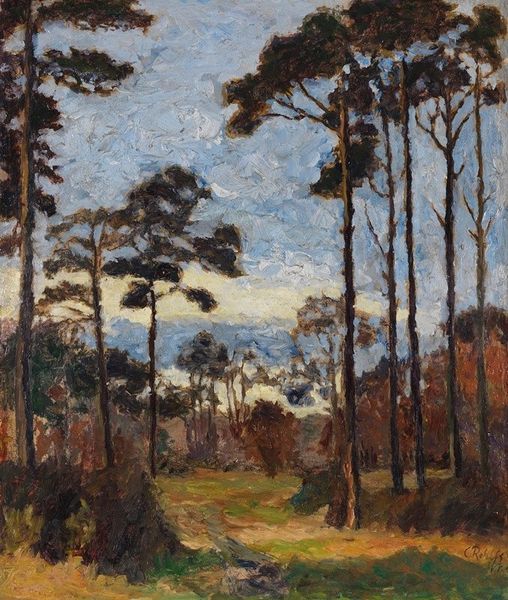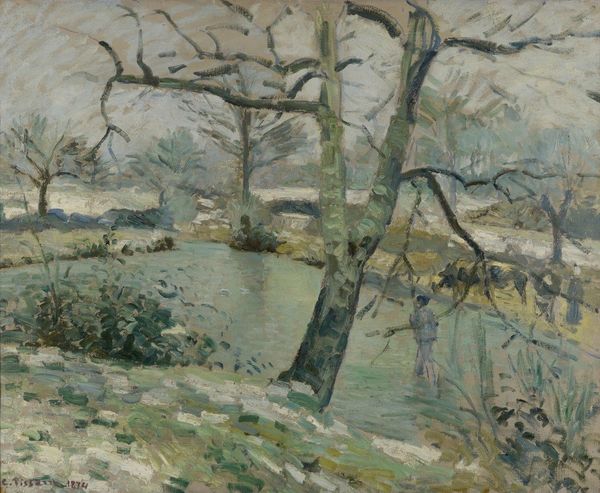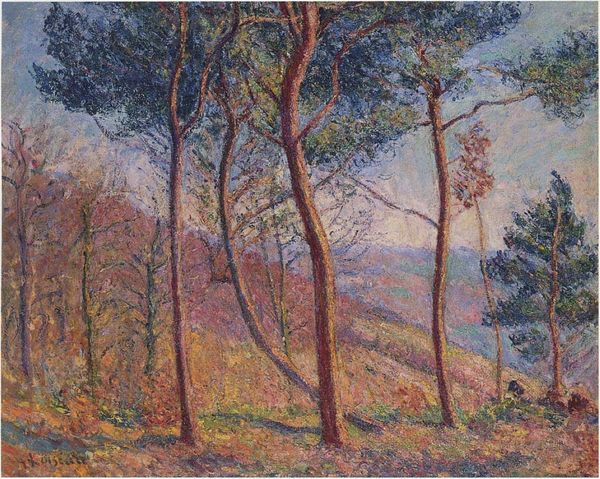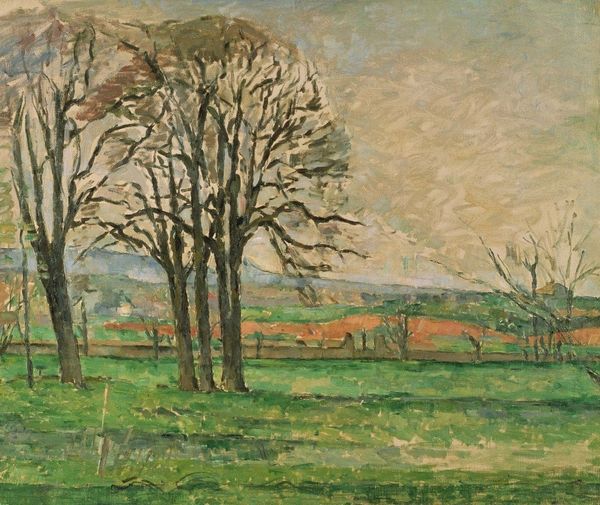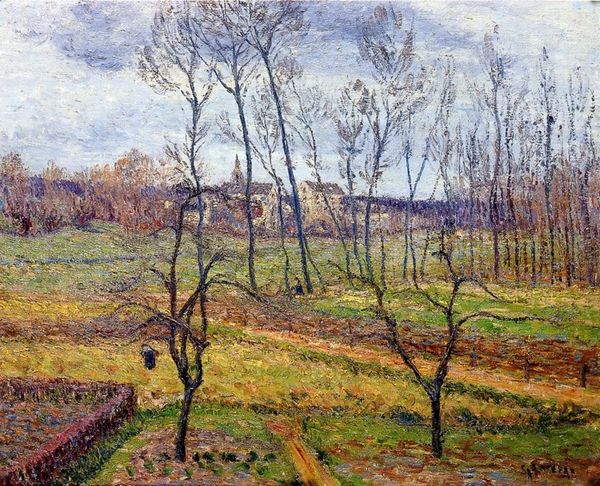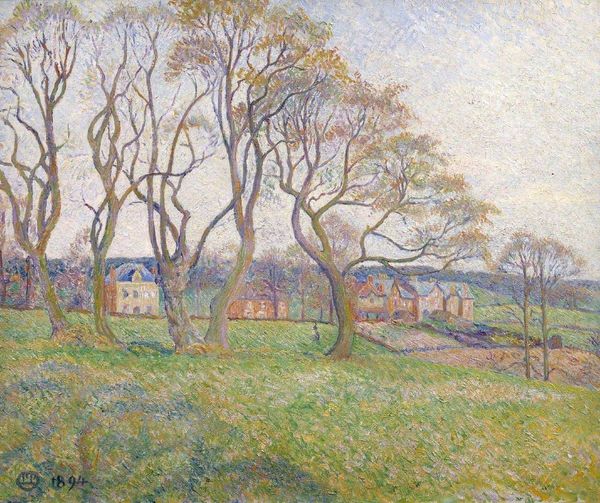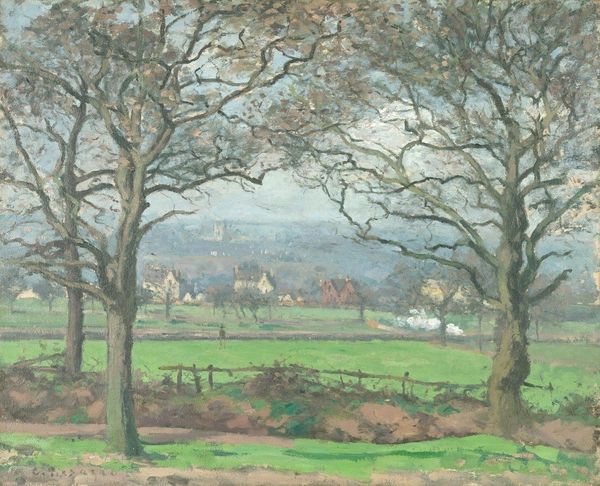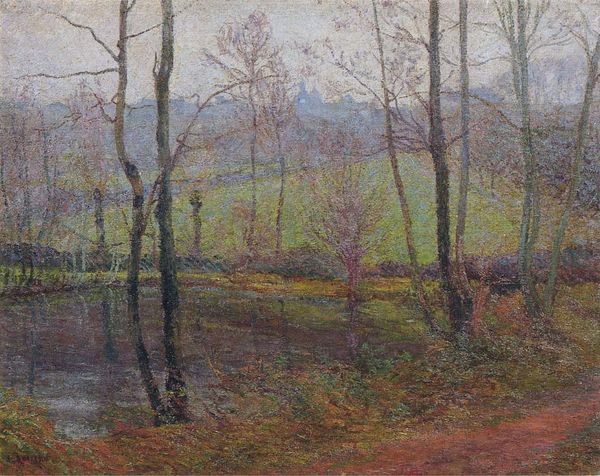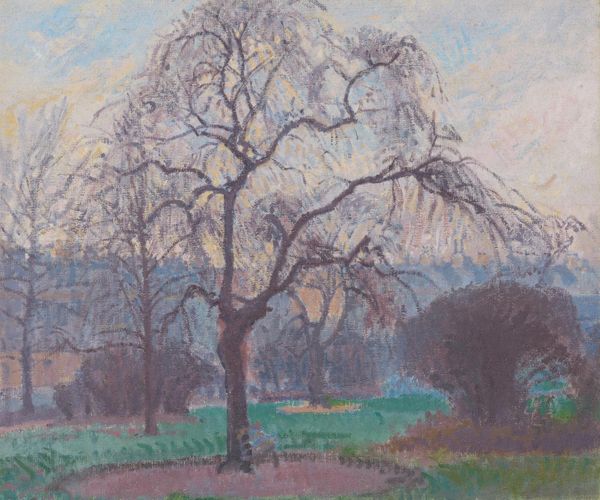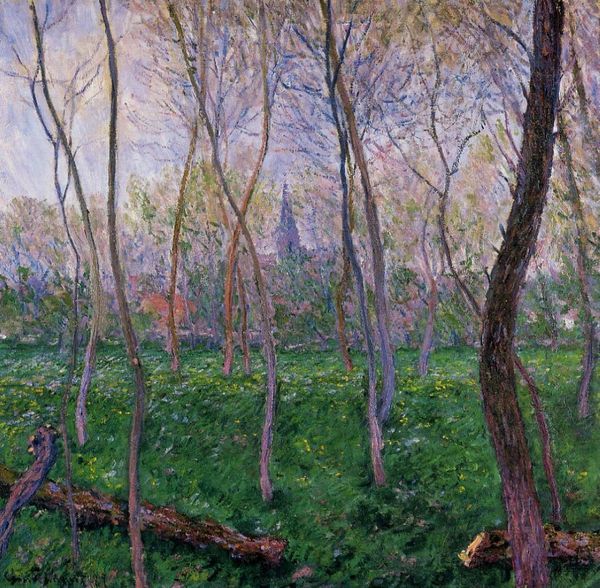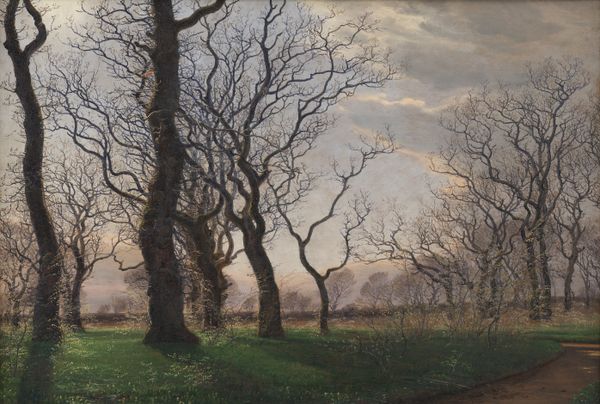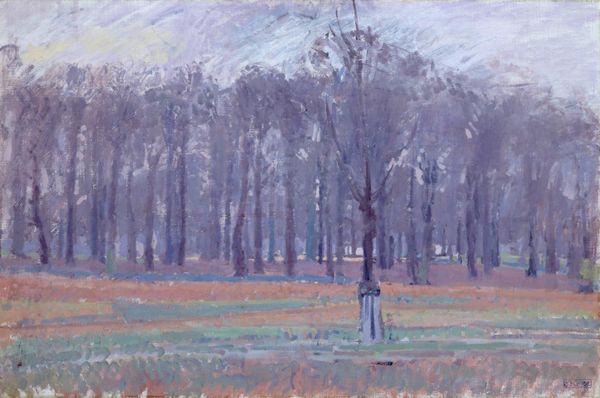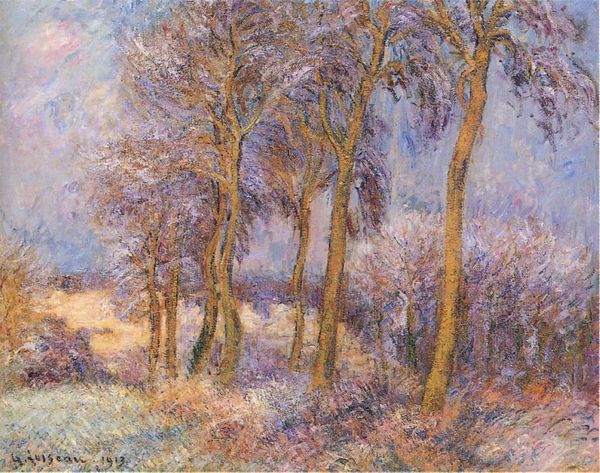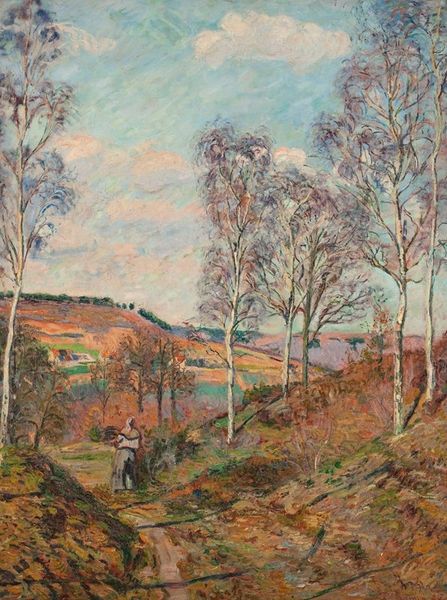
Copyright: Public domain
Curator: Before us, we see Lucien Pissarro’s oil on canvas, "The Dunmow Road from Tilty Wood," completed in 1915. This canvas captures a scene during a period of heightened artistic engagement with rural England, reflective of the anxieties of a rapidly changing society grappling with industrialization and, of course, the looming shadow of the Great War. Editor: The most prominent thing is the overwhelming sense of depth here, achieved mainly through the positioning of those bare trees. Their verticality really punctuates the recession into the background. The eye travels irresistibly from the foreground towards the horizon. Curator: Absolutely. Pissarro, son of the Impressionist Camille Pissarro, built upon that tradition, though pushing it further into post-Impressionism with a strong emphasis on plein-air painting and naturalism. His choice of subject matter and style place him firmly within a larger dialogue about national identity and the pastoral ideal. There's a subtle social commentary present, isn't there? Editor: Subtlety is key here. It isn’t just documentation; the materiality adds to the impact. Note the texture. Pissarro uses visible brushstrokes—a mosaic of colour—creating a shimmering effect. This active surface invites close looking and provides a real sense of atmosphere, particularly in how it models the light filtering through the bare branches. Curator: That impasto technique also adds to the sense of immediacy, placing the viewer right there on the road to Dunmow, experiencing the chill of a late autumn day. Consider also, Lucien Pissarro wasn't merely painting nature, he was, through his art, engaging in a complex dialogue concerning urban flight. London was perceived to have overwhelming social challenges that coincided with what Pissarro portrayed through painting the rural, its timeless appeal and restorative properties. Editor: And yet, within those rustic images is this complex arrangement of horizontals and verticals, lines and blocks of colour that bring stability and formal strength to the picture. There’s a very delicate balance in terms of organization to offset the looser brushwork. The structure of those trees acts like an organizing grid. Curator: In this way, Pissarro provided Londoners and other city residents idealized and curated experiences. The image invites them to reflect on their society and country through Pissarro’s own painterly choices and visual messaging. Editor: Pissarro, like so many artists, had this fascinating push and pull—a desire to document, to analyze and create something beautiful from what was simply around. It allows for multiple interpretations, doesn't it?
Comments
No comments
Be the first to comment and join the conversation on the ultimate creative platform.
